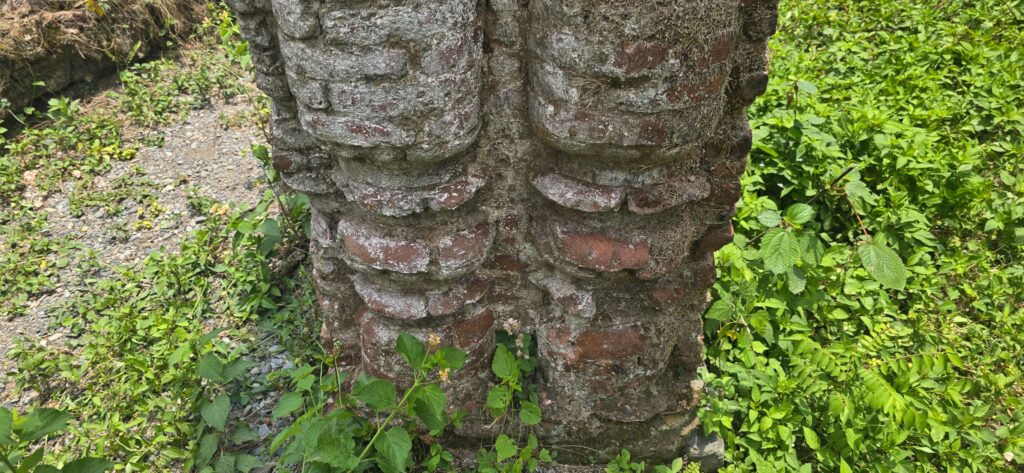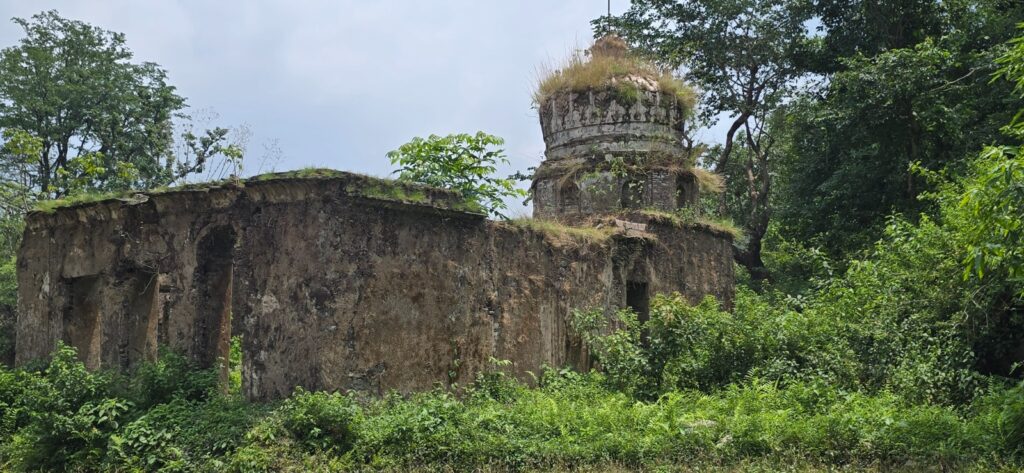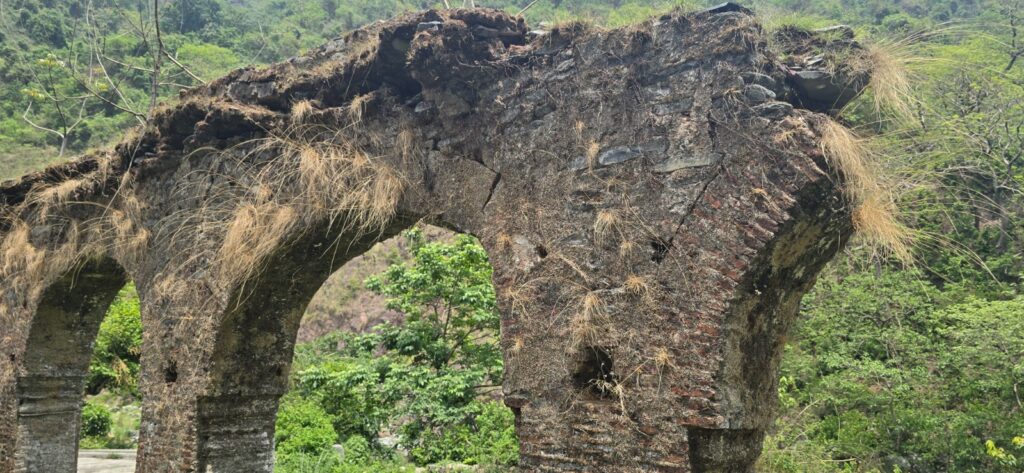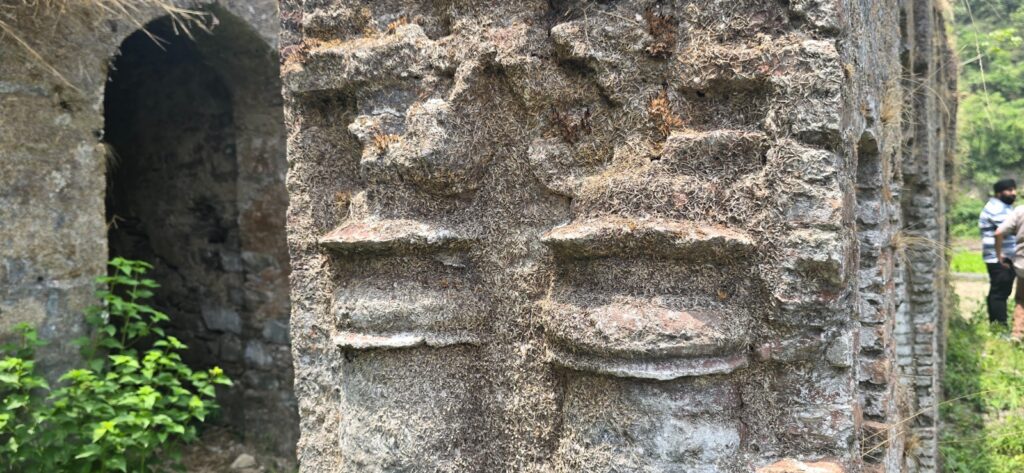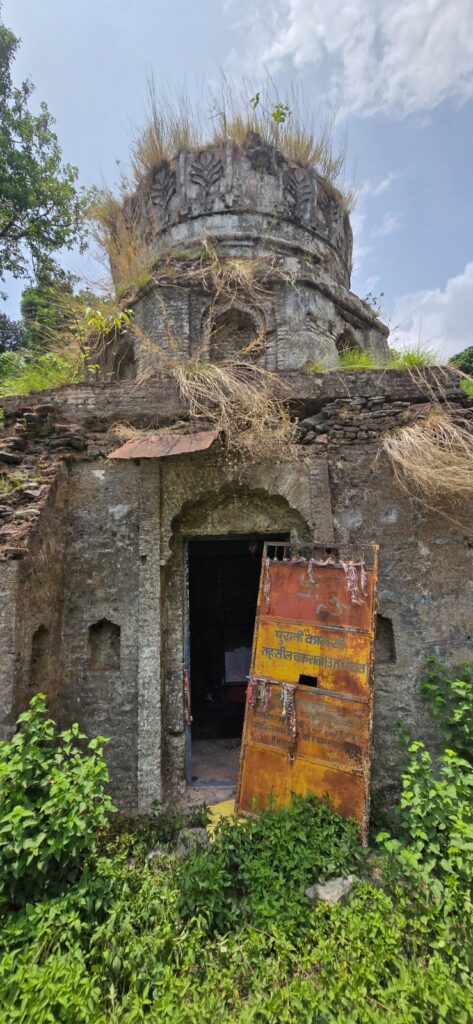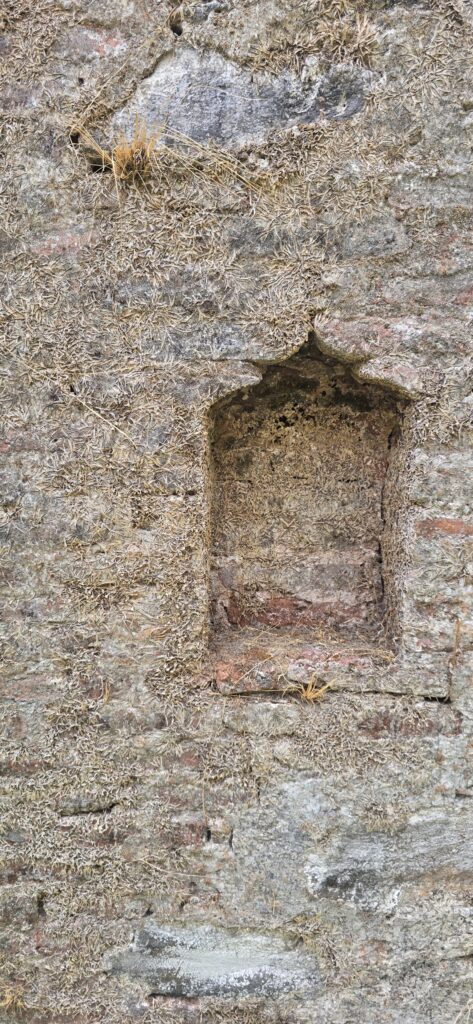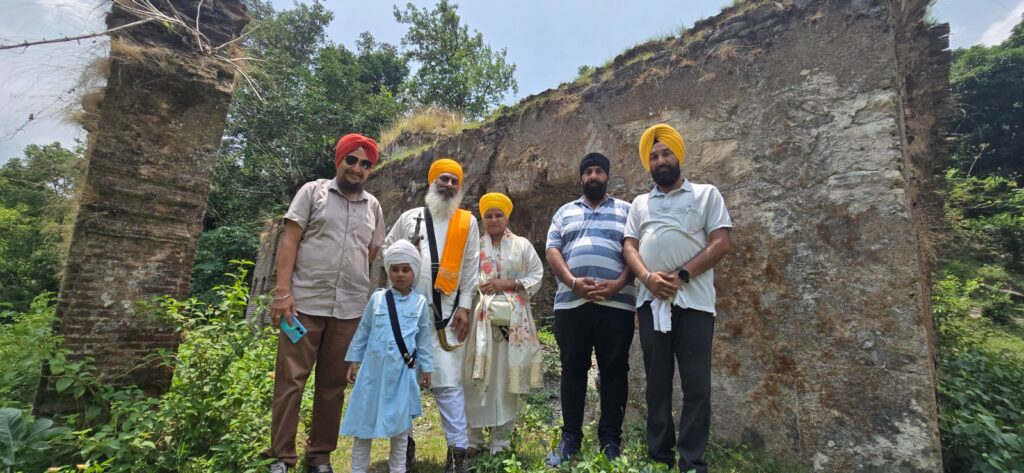Echoes of the Forgotten Shrines – Purani Kalsi
ੴ ਸਤਿਗੁਰੂ ਪ੍ਰਸਾਦਿ ॥
Countless treasures wrapped in the layers of history are still silently calling us—calling us to return to them, to recognize them, and to preserve them. On such a historic journey, Team Khoj-Vichar, under the leadership of renowned historian Dr. Bhagwan Singh Khoji, reached Purani Kalsi—a forgotten Sikh pilgrimage site in Uttarakhand.
When Dr. Khoji, accompanied by devoted Sikh sevadars, arrived at the sacred site, the vision that unfolded before them was profoundly soul-stirring. The place, once connected with the life episodes of Sri Guru Gobind Singh Ji Maharaj, has now been reduced to mere ruins—suffering under the blows of time and neglect.
As Dr. Khoji attempted to capture the history of this place through his camera for the Sangat, a painful prayer welled up from the depths of his heart and spontaneously flowed out of his lips:
(add from ardas)
“Every Sikh prays daily in the Ardas that those Gurdwaras and Guru Dham whose connection with the Panth has been severed, may the Khalsa be blessed with their care and service. We ask for the gift of Truth, the gift of Sikhi, the gift of Kes, the gift of Rehat. But what about those places which are the very pillars of our identity and are now sinking into the abyss of oblivion?”
From Paonta Sahib to Rishi Kalpi
Before arriving at this historic site, the team had visited Gurdwara Sri Paonta Sahib. Just as one crosses the threshold of the Gurdwara, a small spot on the right comes into view, where a plaque is installed. Reading it, one learns that this place is associated with Rishi Kalpi Ji.
With deep emotion in his voice, Dr. Khoji recounted that Rishi Kalpi had surrendered his mortal frame in the lap of Guru Gobind Singh Ji, attaining Brahmaleen at that very place. He further shared that on an earlier visit, a divine stirring had arisen within his heart—a sacred resolve that he must journey to the original abode of Rishi Kalpi, known as Purani Kalsi.
Yet the tragic reality is that in the year 2025, the sanctified original site has been completely effaced. In the name of modern development, those entrusted to preserve its sanctity became the very agents of its destruction. Upon the sacred ground now stand a vast underground parking facility and a rest house. The true place of Rishi Kalpi has been displaced—its memory pushed aside—so that a travelers’ lodge might rise upon the very soil where he once attained Brahmaleen.
History Buried in Ruins
When Dr. Khoji and his team closely examined the remaining walls and structures, they discovered that the site had been constructed using Nanakshahi bricks, lime, and a mixture of clay. Stone slabs are embedded in the walls, and the roof framework is also made of Nanakshahi bricks. All these remnants silently testify to a rich and significant history.
The architectural style of the entrance gates is distinctive and highly captivating. It is evident that the builders had invested immense labor in constructing this sacred site in their time. It also confirms that the use of Nanakshahi bricks was prevalent even in the hilly regions of Uttarakhand, which in itself holds historical importance.
History Through the Voices of the Locals
Advocate Kulvinder Singh, a resident of Vikas Nagar who has preserved the original memories of this site, shared that when Rishi Kalpi had grown very old, Shri Guru Gobind Singh Maharaj himself visited this place and took the Rishi along to Paonta Sahib.
Even today, the spot on the right side as one enters Paonta Sahib stands as a witness to this historic meeting—where Rishi Kalpi took his last breath in the lap of the Guru. Guru Sahib performed his final rites with full ceremonial reverence, a unique and significant event in Sikh tradition.
AA Compassionate Call – An Appeal for Revival
Advocate Kulvinder Singh spoke with deep emotion:
“This place has now fallen into ruins, yet we have the power to revive it. I fold my hands in humble appeal, urging the Sangat to come forward and restore this site in memory of Rishi Kalpi and Guru Gobind Singh Ji. The location is just about 15 km away, opposite Kalsi Tehsil, and is easily accessible to every Sikh.”
He concluded, “I, Advocate Kulvinder Singh (Mob. 9758367692), a resident of Vikas Nagar, am always available for direct communication with the Sangat. I am sincerely grateful to Dr. Khoji and his team for conducting such explorations and bringing history back to light.”
Another poignant moment of this historic journey came when local resident Sardar Baljeet Singh shared his heartfelt experience:
“I am Baljeet Singh, a resident here. Today, when historian Dr. Bhagwan Singh ‘Khoji’ arrived at this site, my heart swelled with pride and satisfaction. Their arrival has awakened a new consciousness in this forgotten place.”
As Dr. Khoji conducted a thorough examination of the remnants, it became evident that these ruins were linked to the era of Guru Sahib Ji. Witnessing the dilapidated condition of the site, Baljeet Singh’s voice grew heavy with emotion:
“This sight shakes our very soul. On one hand, we speak of history; on the other, we continue erasing these memories with our own hands.”
Preserving Heritage — Destruction in the Name of Development?
Baljeet Singh, along with the residents of his village Atalaw and the wider Jaunsar region, collectively raised the demand that this historic site be developed comprehensively—but not at the cost of its heritage. They emphasized that the site must be preserved in its original form while allowing for thoughtful development.
Their clear suggestion was that if a roof is required over the site, it should be constructed as a protective tiled roof above the structure rather than burying it under modern concrete.
They appealed to the Sangat:
“We earnestly request the Sangat to come forward in this effort. The villagers are ready to contribute their body, mind, and wealth to this service.”
(Contact for Baljeet Singh: Mobile 9719441413)
Divine Intersections – The Journey of Guru Gobind Singh Ji and Rishi Kalpi
Dr. Bhagwan Singh Khoji, in his address, illuminated a profound historical truth: the life of Rishi Kalpi spanned the divine eras from Shri Guru Nanak Dev Ji to Shri Guru Gobind Singh Ji. His existence was marked by events that hold a sacred and exceptional place in Sikh history.
One such luminous episode tells that during a time of discord between King Medni Prakash and King Fateh Shah, Rishi Kalpi, guided by spiritual insight, advised King Medni Prakash:
“Only the one who carries the tenth light of Shri Guru Nanak Dev Ji—both saint and warrior, with arms reaching to the knees—can dissolve this enmity.”
Through this divine sign, King Medni Prakash recognized the Tenth Master, Shri Guru Gobind Singh Ji. Guided by the call of destiny, Guru Sahib journeyed to Paonta Sahib, bringing with Him the light of wisdom, courage, and grace, to dispel darkness and restore harmony.
Rishi Kalpi’s Final Wish – To Attain Brahmaleen in the Lap of the Guru
During his travels through the mountains, Guru Sahib learned of Rishi Kalpi’s sacred place of meditation. The Rishi’s final desire was simple yet profound:
“I wish to take my last breath in the lap of Sri Guru Gobind Singh Ji.”
True to this wish, Guru Sahib held him in His lap, and Rishi Kalpi attained Brahmaleen.
Yet today, the very site where this divine leela took place stands in sorrowful neglect, teetering on the brink of disappearance.
A Difficult Path, but a Determined Heart
When Dr. Khoji’s team reached this site, there was no direct path. They had to walk through steep mountain trails to arrive there. With them was his five-year-old child, Shahadat Singh, who completed the arduous climb—delivering the message that devotion is not bound by age.
For years, local residents have safeguarded this site with their spirit of service, even though it has remained far from the attention of both government authorities and the Sangat.
Once again, Dr. Khoji’s voice quivered with deep sorrow, carrying the weight of centuries of forgotten history. With eyes filled with anguish, he called out to the Sangat:
*”Sikhs, awake! Awake! This sacred place is crying out in pain. The people who have nurtured it for generations weep and implore you—O devoted lovers of the Panth! Preserve this historic site. Let not the children of tomorrow know it only through faded photographs and written tales.
Have we become content with the mere glitter of new Gurdwaras? Have we lost touch with the soul of our history? Do these stones, these ruins, speak nothing to us?
No matter how many grand structures we may raise, if we fail to care for the original sacred sites, our foundations remain hollow. The memorial of Rishi Kalpi Ji at Paonta Sahib has already been lost. Please—do not allow this hallowed ground to suffer the same fate.”*
The words hung heavy in the air, a solemn reminder that history is not merely to be remembered, but to be protected, revered, and lived.
Under the Shadow of the Nishan Sahib – A Ray of Hope
Once upon a time, a magnificent Nishan Sahib stood proudly at this sacred site. The remains of its base are still present today. Sadly, with very few Sikhs in the area, even that Nishan Sahib is on the verge of becoming history.
Yet, while the ruins stand silent on one side, on the other a pure river flows beside them. The sight is one of desolation, but also one of gentle hope—like a cooling stream of possibilities.
Baljeet Singh and other villagers believe with firm conviction that soon the younger generation will awaken, and once again the Nishan Sahib will wave here in full glory—bathed in reverence, service, and the light of Gurbani.
During the research, when Team Khoj-Vichar brushed the dust off the layers of history, an old but authentic book came before us—“Guru Teerth Cycle Yatra” written by Bhai Dhanna Singh Ji Patialvi. Reading the account inscribed on page 166, our consciousness was stirred:
“When Bhai Dhanna Singh Ji reached Kalsi, he wrote clearly—‘This is the village established by Rishi Kalpi. Here I myself had the darshan of Manji Sahib, and at this very spot the Nishan Sahib also swayed.’”
And most significantly—this place was referred to as “The Site of the Tenth Master.”
This journey of Bhai Sahib was nearly 94 years ago. At that time, Manji Sahib and Nishan Sahib were still present here. Today, the place has been reduced to ruins. Yet, amid the broken stones, the radiance of Guru Sahib’s glory is still hidden—it only requires eyes that can truly see it.
“This is not just a ruin…” — The Call of Team Khoj-Vichar
Dr. Bhagwan Singh Khoji and his Team Khoj-Vichar have repeatedly emphasized that this site is not merely a pile of bricks, mortar, and rubble—but a living testimony to a glorious history.
“There are countless such sites that are crumbling under the blows of time. Sikhs, if we still do not awaken, our heritage will remain confined only to books.”
The work of our team is not to sit at a desk reading history—but to walk the mountain trails and bring history to light. Since the year 2021–22, our team has been consistently identifying such forgotten Guru shrines and presenting their true form before the Sangat.
The Contribution of Dr. Devinder Singh Grewal – Another Proof
In this research journey, the name of the great historian of the Guru Panth Khalsa, Dr. Devinder Singh Grewal, deserves special mention. He too visited this site and carried out extensive research from the battlefield of Bhangaṇī to Purani Kalsi.
He not only expressed deep concern at the neglect of the remains, but also, through documentation, revealed the significance of this place. He is one of the silent soldiers of the Sikh Panth, who has authored as many as 124 volumes, ensuring that Sikh history remains intact.
Team Khoj-Vichar expresses heartfelt gratitude to him and, following his example, continues to carry this mission forward.
A Cry That Must Reach Every Heart
*”Whoever loves Sri Guru Gobind Singh Ji must listen to this call. This is not merely a video clip—it is the heart-wrenching cry of history.
Our heritage is collapsing—will no one rise even now? Will no youth, no brave soul, no Sangat, no institution come forward?”*
In this emotional appeal of the team burns the fire of duty—a call that “we must not only build new structures, but also remain connected to our roots.”
Voices of the Local People — Shadows of the Past
When the team conversed with the villagers, it became known that earlier, two to three times a year, langar and bhandaare were organized here. But for the past two years, these activities have ceased completely.
The locals now refer to this site as “Thakur Dwara.” No Sikhs or Sardars come here anymore—only tourists, who see it merely as a hill-station attraction.
But the villagers’ desire is not for it to become just a tourist spot. Their clear opinion is:
“A beautiful Gurdwara should be built here, one that not only revives our heritage but also becomes a center of devotion and faith.”
They added:
“This is the very place where Guru Sahib, mounted on horseback with his sevadars, arrived—and from here took Rishi Kalpi Ji in a palanquin to Paonta Sahib.”
Geographical Location – How to Reach
This site lies near Paonta Sahib (Himachal Pradesh). Immediately after crossing the Himachal–Uttarakhand border comes a place called Harbatpur. From there, one road leads to Dehradun, and the other towards Vikasnagar.
Purani Kalsi village is located about 15 kilometers from Harbatpur. From in front of the village post office, a dirt path leads inward. After walking about 150 meters, this historic site is reached—where even today, amid the ruins, history continues to breathe.
Conclusion – Now the Decision Rests with the Sangat
The picture that emerged while uncovering this site is not merely a document of history—but the cry of heritage, a call of duty, and a concern for the future.
*”Will we go on building only stone structures, or will we also preserve the Gurdwaras of our soul?
Will our coming generations see these places only in photo albums, or will they also be able to bow their heads at their feet?”*
Now is the time to act together.
Now is the time to once again make this site a symbol of pride.
Now is the time to revive history.
Waheguru Ji Ka Khalsa, Waheguru Ji Ki Fateh!
